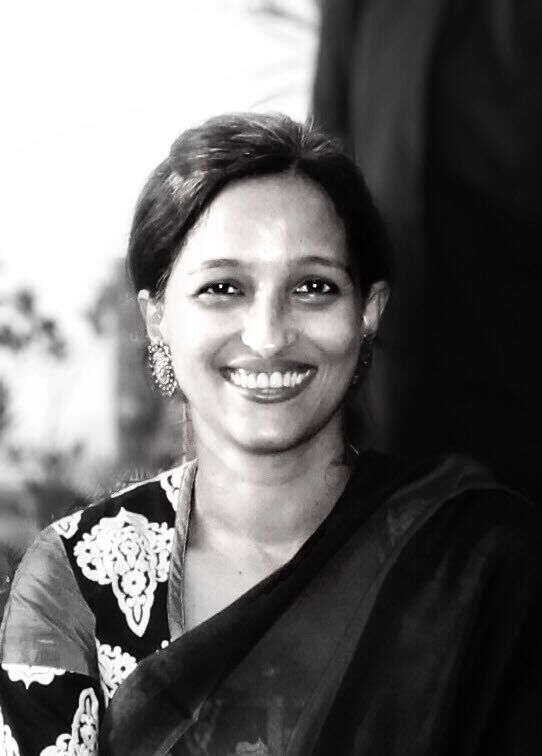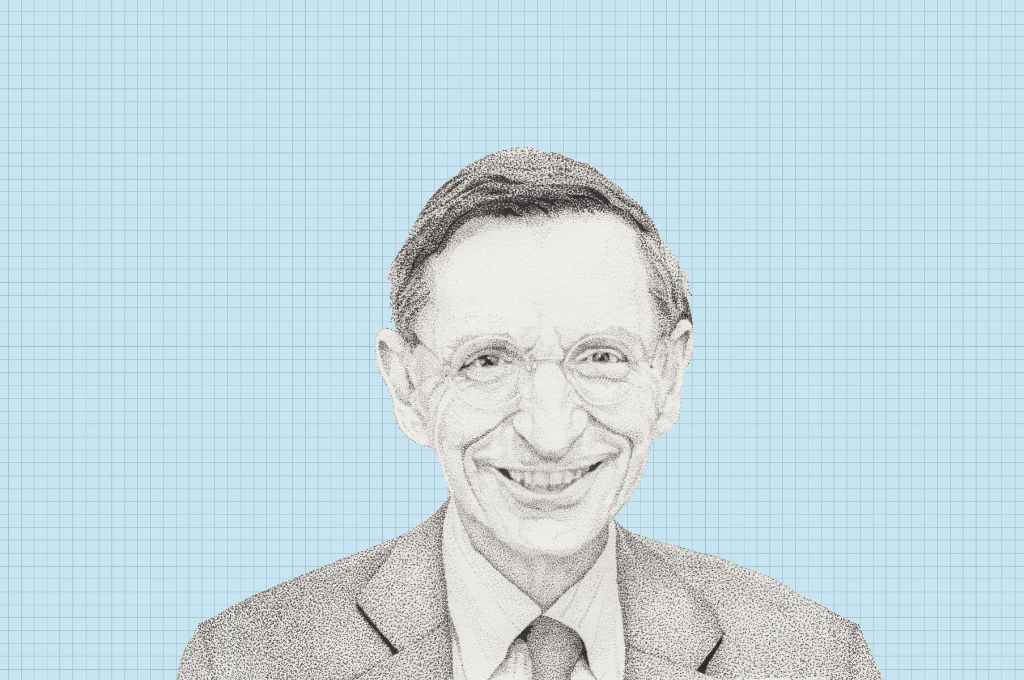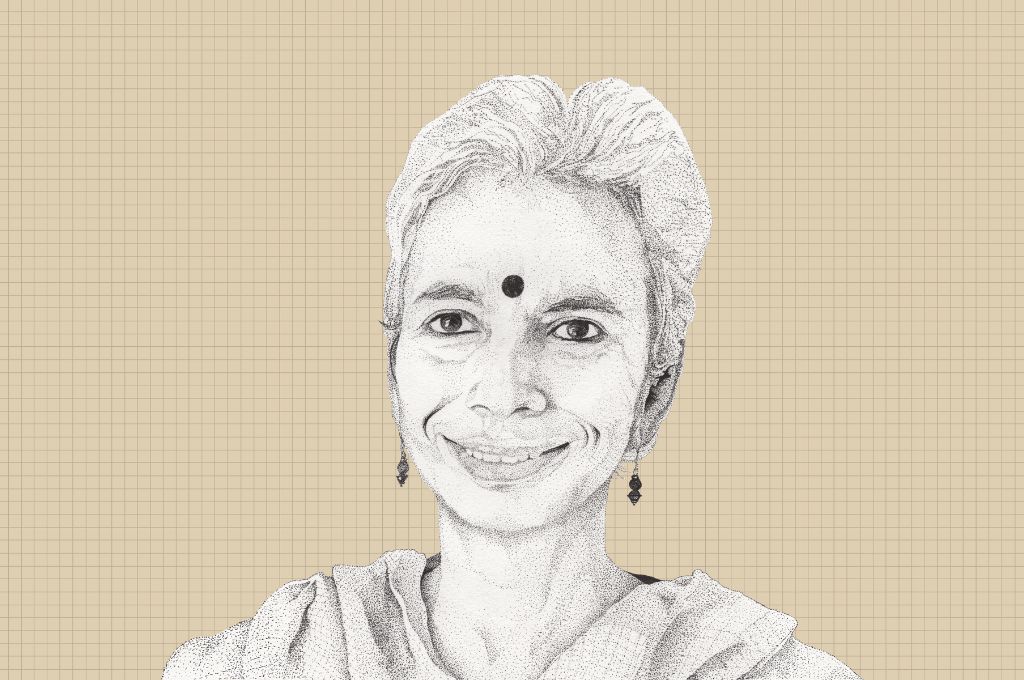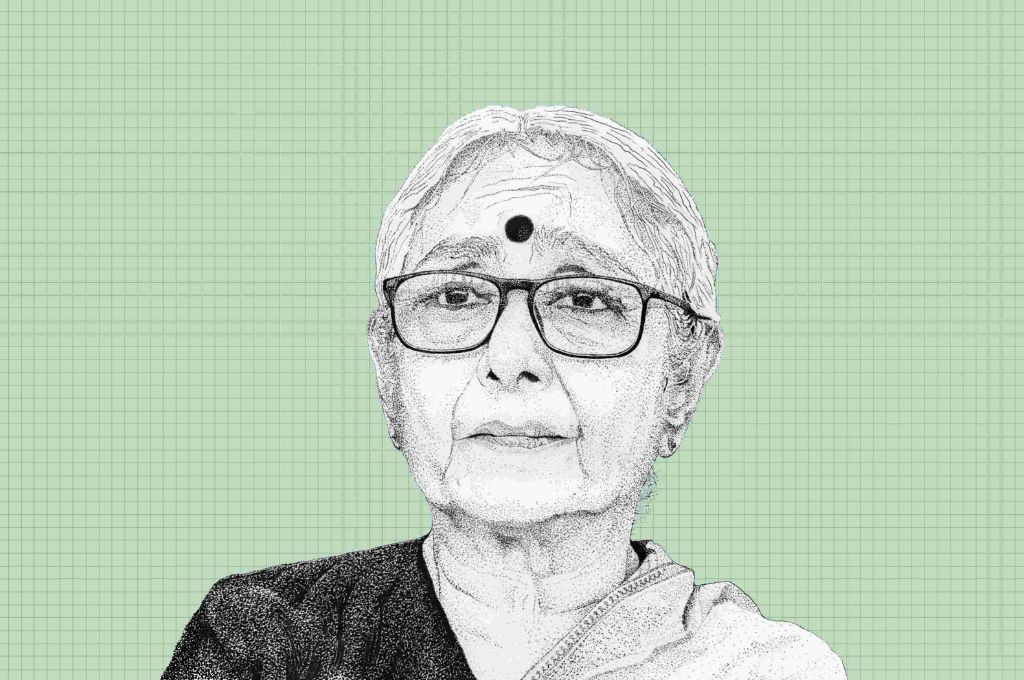An economist by training and a social worker by practice, Aloysius Fernandez transformed the space of financial inclusion in India. As the executive director of MYRADA, he introduced the concept of self-help groups (SHGs), which set the stage for microfinance and its exponential growth in the country. A firm believer in learning from communities in their own environments, Aloysius has spent the last seven decades dedicated to helping people build institutions. In 2020, he was awarded the Padma Shri for his contributions towards social development.
In this interview with IDR, Fernandez talks about the evolution of SHGs in India. He explains why nonprofits need to help communities build their own institutions, elaborates on the fractured relationship between civil society institutions and the government, and tells us why the social sector needs to spend time with, and learn from, the informal sector.
Could you speak about your childhood and the early influences in your life?
My maternal grandfather left his home in Goa at a young age to study in Pune. He then got a job with the Burma Oil Company in 1904, which is also where my father ended up working as an apprentice engineer. I was born in Burma. When World War II broke out, our family caught the last boat from Rangoon (now Yangon) to Kolkata with a small bundle of belongings, from where we proceeded to our ancestral home in Goa.

My father was sent directly to Abadan, Iran, and then to Assam, where he was the general manager of the Assam Oil Company. I was brought up by my maternal grandparents and grand-aunt while my parents were in Iran, because in those days—more than 80 years ago—they didn’t take kids everywhere. My grandparents were conservative, traditional Catholics, and my childhood revolved around my school and the Church.
Traditionally, many in our family dedicated their lives to the Church. I too was ordained a priest in 1953. Soon after, I was posted as the secretary to the Archbishop of Bangalore, where I dealt with files and accounts, and was close to the power structure. In 1971, I was asked to move to Kolkata to manage the Bangladesh refugee programme as the deputy director of Caritas India, the official institution of the Catholic Church that responds to disasters and promotes development.
Like my religious beliefs, my ideas on development have changed over time.
This experience exposed me to a whole new world, making me question my thinking that was built on religion and tradition. Working and living with people, especially the poor, during the droughts in Maharashtra (1973) and Ramnad (1973–74) brought new ideas and beliefs to my world view. Eventually, in 1976, I left the Church.
Like my religious beliefs, my ideas on development have changed over the years. As young people we were taught to eat all the food on our plates because somebody is hungry somewhere. So, we were encouraged to go and give food to people. Later, as I grew up and started work with Caritas, I learned that you don’t give a person fish, you teach them to fish. But when I started working at MYRADA, where I’ve dedicated about 40 years of my life, I discovered that that was only half the story—that even if you teach people to fish, they can’t reach the river. Particularly in India, since there are so many obstacles in the way for the poor. There are social barriers, caste barriers, great power imbalances.
The SHG concept, which revolutionised the area of microfinance and livelihoods in India, was your brainchild. How did you get around to developing and building the SHG movement?
When we were working in rural Karnataka during the early 1980s, the issue of power was particularly stark in the two institutions we worked with: the ones that were established to support governance (the panchayati raj), and those that promoted institutional development (the cooperatives). In our work with the Primary Agricultural Credit Societies (PACS) in Karnataka, we discovered that these cooperatives were controlled by the powerful people of the village; the poor people were marginalised. In fact, the PACS, which were supposed to provide finance to the poor at subsidised rates, were used as an instrument to exploit them.

For example, the president and secretary of the cooperatives, who were large farmers with economic power and social status, would borrow money from the cooperative at 7–8 percent and on-lend it to others at 40 percent. Moreover, their borrowers, who were invariably their tenants or smaller farmers, were at their mercy—they were at their beck and call; they had to plough their lands first and then their own.
Seeing this play out, we realised that cooperatives don’t work in stratified, structured societies. The model of cooperatives—which was promoted actively by the government to support the livelihoods needs of vulnerable populations—worked well with the milk cooperatives in Anand, Gujarat, because the smaller producers rode on the backs of the big ones. The 100-kilometre milk collection route needed to be viable in that they had to be able to collect large quantities of milk. And it was the big farmer who could supply 25–30 litres of milk versus the small farmer’s 1–2 litres of milk. So the small farmer piggybacked off his bigger neighbours. But in the credit cooperative, it was the opposite. Here, the wealthier, bigger farmer exploited the smaller one because they could; their social and economic status gave them power and influence, which they took full advantage of.
This doesn’t mean that the concept of cooperatives is faulty. Some cooperatives work because the commodities are different. The principle we learned was that the institution that you decide to use—in this case, a cooperative—has to be appropriate to the resource being managed or objective to be achieved. If you use the wrong institution, you can end up doing the opposite of what you intended. Use a cooperative for milk, you’ll succeed. Use a cooperative for credit, and it will be exploitative.
You cannot learn what happens in the field in management classrooms.
It took close and regular interactions with people, especially with the poorer farmers, in places where they felt comfortable, including tea and liquor stalls, for us to arrive at this learning. You cannot learn what happens in the field in management classrooms. If people want to work in the informal sector, they have to learn in the informal sector, where the people are, where they feel comfortable telling you about their lives, their problems and solutions. And they have to feel comfortable in the field. If you make them come to your classroom, you will not get any information because those spaces are intimidating.
You have to spend enough time with the milk unions, the farmer groups, the women’s collectives; here you will learn politics, economics, and sociology. It was through sitting in a liquor shop in Huthur, Karnataka, that I learned the dynamics of the big farmers versus the small—that they would borrow from the cooperative at 7 percent and lend it to the poor at 40 percent.
Could you tell us more about what you learnt through your interactions with the people?
When the poorer families came to discuss their issues with the PACS system with the MYRADA staff, they came in groups of 10 to 20. We soon realised that they never came alone—they needed support and so they came with a group of people they trusted. When I started talking to them, I discovered that the people in these groups were united by relationships of trust. And that is what pulled them through the difficult times. When they wanted money, they would ask someone in this circle. When a mother wanted to go somewhere, she would ask someone in this group to keep her child. They trusted one another—these relations of mutual trust and support were a strength. So we said, why not build on this strength?
We called these groups affinity groups. We said that if we want them to have control over their lives, if they had to find the path to the river, we would have to invest in them in terms of time and training—what we called institutional capacity building. Even today people think that you can focus on individuals, educate them and provide skills, and they will thrive. But these are not individual skills, these are institutional skills—how to meet, how to participate, how to solve problems.
We knew from experience that in most cases a poor person cannot bring about change by themselves, especially if it involves taking on mighty power structures.
We knew from experience that in most cases a poor person cannot bring about change by themselves, especially if it involves taking on mighty power structures. They needed others to join them, preferably in an institution of their own. Learning that these groups chose not to question or challenge the local power structure was an important lesson for us. They feared a backlash, and they couldn’t afford that since they had to live in the village. Instead, they opted to form institutions—in this case, SHGs—which could provide them with the support they needed to gain a degree of independence from the powerful families that controlled their society.
We soon discovered something else—that the poor had sufficient strengths to form these institutions. We have to realise that if we want people to really stand on their own, we cannot work on their needs. Most studies are based on how do you assess needs, how do you assess the problems. We learned that if you build on people’s needs, you don’t empower them. On the contrary, they will expect you to take the lead and solve their problems because you’ve created a relationship of dependency.
Building institutions is the beginning of the basis of power. You can understand this clearly from the farmers’ movement of 2020. If they had met one day and had a dharna, nobody would have paid any attention. Or in the case of women who go and protest outside a liquor shop, and no one listens. The farmers’ protest worked because they sustained it. And they would never have sustained it had they not built an institution. And as part of building it, they had to educate people, constantly tell them why they were doing it, what the goals were, and how they had to keep at it. That is important—the repeated messaging, sustained presence, and participation.
Training groups of people on how to sustain themselves and their movements is one of the biggest sources of power for the marginalised.
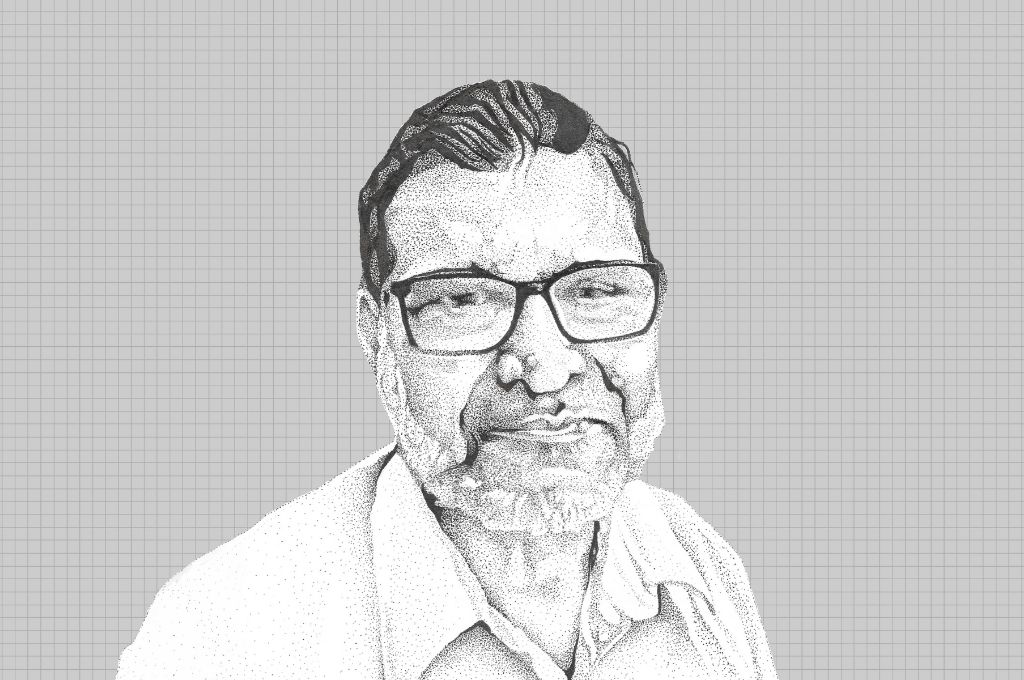
How can nonprofits help in the building of institutions?
If the organisation’s mission is to build people’s institutions, and to support the community to take the lead across every step of the process, then a strong understanding between the donor and their nonprofit partner is critical. This approach has its downsides—building institutions and involving people in the project’s process needs more time and skills than donors budget for. Moreover, not all of them approve the costs incurred for institutional capacity building.
Further, all people’s institutions do not progress at the same speed, and progress is not always linear, especially when they meet hurdles created by entrenched power structures. Many take two steps forward and one step back because they do not want to cause tension or are not sure of the fallout.
There are upsides too, however. People find their own ways of overcoming the hurdles created by unequal power relations, and they move forward at their pace and at the time of their choice. If a nonprofit takes the lead without involving people’s institutions, the tendency is to opt for a strategy which is quick but potentially confrontational. The nonprofit is then usually forced to leave, and the communities are left worse off as a result.
On its part, it is important that the nonprofit makes the effort required to set up an organisational structure, operating systems, and an internal culture that is appropriate to support the implementation of its mission of building people’s institutions.
The SHG model has been so successful in some areas. Why has this model of local institution building and devolution of power not worked in other areas?
It is important to understand that finance was not the objective of the SHG model—it was empowerment. The model was scaled with the help of financial institutions like NABARD, because it needed policy changes around lending and access to finance in the country. However, initially the SHGs were the mandate of the various state Women’s Development Corporations (WDCs), which focused on empowerment. Unfortunately, the political patronage for WDCs faded and gradually they became weaker. Today, there are almost no WDCs, except MAVIM in Maharashtra. With this gone so has the focus on empowerment. The SHGs are now part of the Rural Development Department, which means that they are run by the government as a financial intermediary as part of the delivery system, and not as an empowered local institution that reflects the power of the people.
Just as SHGs have become mere delivery arms for the NRLM, the relationship between the government and nonprofits has become very transactional across sectors, especially during and post COVID-19. What are the implications of this?
This transactional relationship changes the role of civil society completely. The previous governments, for the last 50 years, paid attention to nonprofits, because they understood the critical role they played. But even they clamped down on nonprofits that protested against industries causing pollution and environmental damage, and on nonprofits that played a significant role during the Emergency.
In general, our governments have never really respected civil society; they have tolerated it.
In general, our governments have never really respected civil society; they have tolerated it. Today it doesn’t even tolerate us—it calls us the fourth frontier of warfare. There is a sharp difference between tolerate and respect. If I tolerate something it means I don’t agree with you, but I put up with you since I cannot do much to control you. But if I respect you, it means that I might even support you because you are doing something worthwhile even though I may not agree with it.
So why didn’t civil society ever get respected?
There are several reasons. One, civil society does not align with the government’s approach of uniformity, speedy delivery, and politicking to win votes. When programmes started by civil society are successful, politicians tend to take credit—for votes. Bureaucrats on the other hand develop projects that incorporate features of the nonprofit’s programme, but they do not give them the space and time required to grow. The government also wants standardisation because it’s easier to control and manage administration of a state, district, and block by eliminating any room for discretion.
There is and always will be an uneasy relationship between government and civil society. That is not a problem. It depends on how you balance the differences. That’s where respect comes in. The moment we don’t understand what respect is, we become intolerant. At MYRADA, for instance, we have had times when one quarter of the institution questioned the government, partially worked with the government but also managed to introduce changes where required, and the rest nurtured independent new initiatives. It’s very important to balance all of these competing priorities in one organisation.
If you do not want to balance the myriad approaches of engaging with the state, you can’t work in a society like India. We have different pressures, but you must know how to get the government in, you must also know how to get the nonprofits together, and you must also know when to tell the government that ‘we don’t agree, but we have an alternative’.
What can civil society do to change this current transactional and, at times, hostile attitude that the government has towards it?
There are signs that civil society is restructuring itself. Though individual activists for social change are an endangered species in the present political ecosystem, there are a large number of action-based organisations that promote people’s participation and institutions in the informal sector. Civil society institutions are also emerging from large social movements like the recent farmers’ movement, and from an increasing sense of marginalisation among Adivasis and Dalits.
Ultimately, though, change is going to take place, perhaps not in the Parliament but on the street. It will happen outside our formal institutions of democracy. The problem though is that if it’s going to happen outside and in the informal system, which is large, and the next generation of civil society thinkers and practitioners do not know enough or care to learn about the informal sector or spend time there, there will be problems.
We need be immersed in this new India from whose experience we can draw inspiration for a new vision, and spread an alternate narrative infused with the values of respect for plurality (many) and diversity (different) and equal opportunities for all—values enshrined in our Constitution.
—
Know more
- Read this article to know why small and marginalised farmers need more than financial inclusion.
- Watch this video to learn more about Aloysius Fernandez’s journey in the social sector.
- Learn through a series of Madhubani paintings how a women’s SHG in Odisha saved an entire village.

